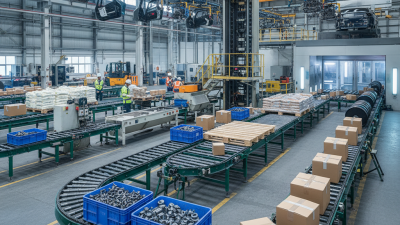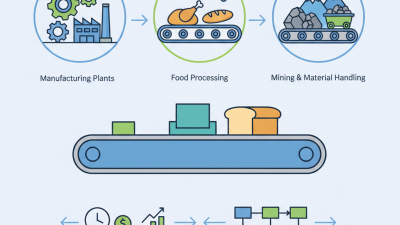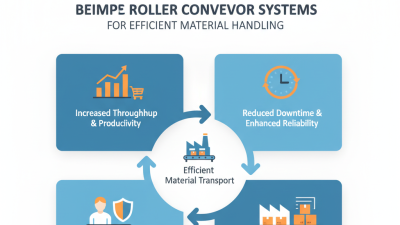
10 Best Chain Conveyor Systems for Efficient Material Handling
In today's fast-paced industrial landscape, efficient material handling is crucial for maintaining productivity and reducing operational costs. Chain conveyors have emerged as a vital solution for transporting heavy units and bulk materials across various manufacturing and warehousing environments. According to a report by ResearchAndMarkets, the global conveyor systems market is projected to grow at a CAGR of 4.2% from 2021 to 2026, driven by the increasing automation in manufacturing processes and the rising demand for efficient supply chain management.
Chain conveyor systems, renowned for their durability and capacity to handle substantial loads, are particularly favored in industries such as automotive, food processing, and logistics. These systems facilitate smooth and reliable movement of materials, reducing handling time and minimizing human error. A study by MarketWatch indicates that chain conveyors are likely to play a significant role in the expected expansion of the material handling market, estimated to reach USD 246.78 billion by 2025.
With advancements in technology, modern chain conveyor systems are becoming increasingly versatile, featuring improvements in energy efficiency and adaptability to diverse operational demands. This article will explore the 10 best chain conveyor systems available on the market today, providing insights into their specifications, applications, and the benefits they offer for maximizing efficiency in material handling operations.
Read more »

 By:Emily - December 8, 2025
By:Emily - December 8, 2025

 By:Ethan - December 6, 2025
By:Ethan - December 6, 2025

 By:Emily - December 5, 2025
By:Emily - December 5, 2025

 By:Ethan - December 3, 2025
By:Ethan - December 3, 2025

 By:Emily - December 1, 2025
By:Emily - December 1, 2025

 By:Madeline - November 29, 2025
By:Madeline - November 29, 2025

 By:Madeline - November 28, 2025
By:Madeline - November 28, 2025

 By:Emily - November 27, 2025
By:Emily - November 27, 2025

 By:Madeline - November 25, 2025
By:Madeline - November 25, 2025

 By:Ethan - November 24, 2025
By:Ethan - November 24, 2025

 By:Ethan - November 22, 2025
By:Ethan - November 22, 2025

 By:Madeline - November 20, 2025
By:Madeline - November 20, 2025

 By:Madeline - November 19, 2025
By:Madeline - November 19, 2025

 By:Madeline - November 13, 2025
By:Madeline - November 13, 2025

 By:Ethan - November 12, 2025
By:Ethan - November 12, 2025